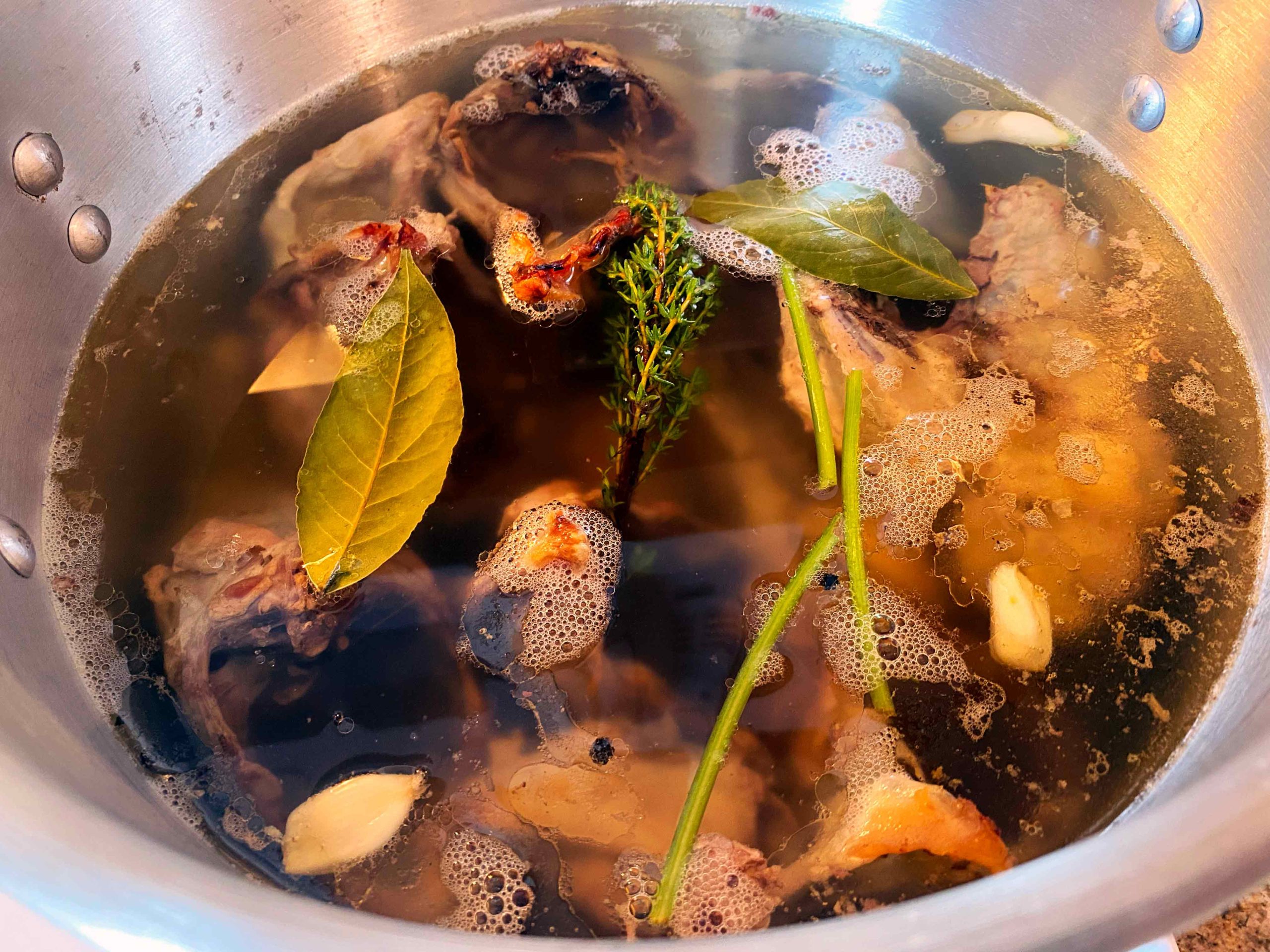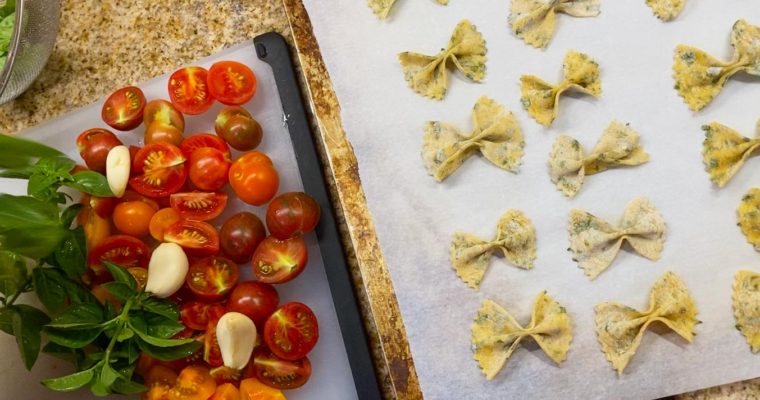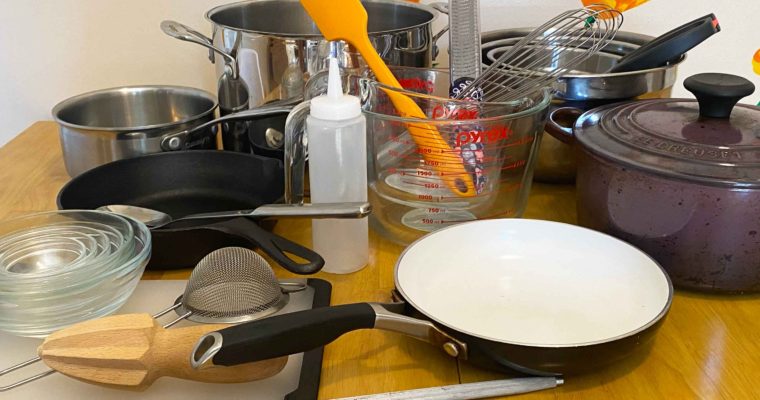Like I said before, stock is the lifeblood of many recipes. If you’ve wondered how to make the best chicken stock, then you know that if you’re using stock that’s over salted and tasteless, then your dish is already starting from a severe disadvantage. Making your own stock is easy and not terribly expensive, especially when you consider that the quarts of saltwater you’re buying are typically around $4 each.
The true cost is space and time. Time to make the stock and the space to store it (the freezer). If you have one of those resources much more than the other, then you should lean on it, hard. If you have, or can make, freezer space for days, then spend a day making a season’s worth of stock and properly store it (name and date!) in your freezer.
Recipes call for various different types of stock — chicken, beef, lamb, veal, etc. — and you can make all of those following these guidelines, but many restaurants exclusively use dark chicken stock for these applications. Where veal once reigned supreme, chicken is now king.
Note: Fish stock (fumet), white stock, and broths are a whole other matter. You can even make chicken stock more suitable for lamb or game recipes with easy additions (see the last step of the recipe).
You’ll need about 2 pounds of bones (backs, wings, necks, etc.) per quart of finished stock. You’ll also need about 50% more liquid at the start to reduce it to the desired level. So if you want a gallon yield, then you need to start with 6 quarts of cold water.
Wash the bones under cool running water and then dry them. Place them on a very lightly oiled roasting pan and put in a preheated 425ºF oven. Roast, turning a few times, for about 30 to 45 minutes, until deep brown (do not scorch!).
Place the bones into a stockpot and add all but about a cup or two of your water and bring to a slow simmer (never, ever boil). Skim the foam as needed (makes it look better and increases the shelf life).
Chop some mirepoix (50% onion, 25% carrots, 25% celery). Take the onions and carrots from your mirepoix and toss them into the roasting pan and place back in the oven, stirring occasionally until caramelized. Toss in celery and roast for another 10 to 15 minutes, until wilted.
Add a small can (about 6 oz) of tomato paste to the mirepoix, stir, and continue to cook until it becomes dark red in color. Add the reserved water to deglaze the pan and reduce until syrupy.
When the stock is about an hour from being fully reduced (about 5 hours in when making a gallon of stock), add the mirepoix and reduced liquid. Then add a sachet d’épices (a few parsley stems, a sprig of thyme, a bay leaf, a few cracked peppercorns, and a garlic clove wrapped in cheesecloth). Keep simmering and skimming as needed for another hour. The stock should have a nice brown color and a fragrant aroma.
DO NOT ADD SALT. Because you’ll be using this for various different recipes or even making demi glace, it’s best to season your stock as needed. Keep in mind that you can always add salt later, but you can never remove it.
Strain your stock through a fine mesh sieve, rapidly cool in an ice bath, portion out, and store. We typically freeze stock in two cup increments, but do whatever works best for you. Just remember to label and date! You can also use your bones and mirepoix from this for remouillage (basically a French second dashi), but that’s another article.
Dark Chicken Stock
Ingredients
- 2 fluid ounces vegetable oil
- 8 pounds chicken bones
- 6 quarts cold water
- 1 pound chopped mirepoix, separated
- 6 ounces tomato paste
- Sachet d’épices
Directions
- Step 1 Briefly heat a roasting pan in a 425º oven with a light coating of oil.
- Step 2 Wash the bones under cool running water, dry them, and place them in the roasting pan. Roast, turning a few times, for about 30 to 45 minutes, until deep brown (do not scorch!).
- Step 3 Place the bones into a stockpot and add 5½ qt/5.28 L of water and bring to a slow simmer (never, ever boil). Skim the foam as needed (makes it look better and increases the shelf life).
- Step 4 Pour off any excess fat from the roasting pan. Toss onions and carrots into the pan and place back in the oven, stirring occasionally until caramelized. Toss in celery and roast for another 10 to 15 minutes, until wilted.
- Step 5 Add a tomato paste to the mirepoix, stir, and continue to cook until it becomes dark red in color. Add the reserved water to deglaze the pan and reduce until syrupy.
- Step 6 After about 5 hours of simmering, add the mirepoix and reduced liquid. Then add a sachet d’épices. Keep simmering and skimming as needed for another hour. The stock should have a nice brown color and a fragrant aroma.
- Step 7 Strain your stock through a fine mesh sieve, rapidly cool in an ice bath, portion out, and store. We typically freeze stock in two cup increments, but do whatever works best for you. Just remember to label and date!
-
Step 8
Variations: For the following applications, add one or more of the herbs/spices to the sachet d’épices.
Duck: Fennel seeds and juniper berries.
Lamb: Caraway seeds, cumin seeds, juniper berries, mint stems, and rosemary.
Game: Fennel seeds and juniper berries.
Pork: Caraway seeds, crushed red pepper, mustard seeds, and oregano stems.






4 thoughts on “How to Make the Best Chicken Stock”